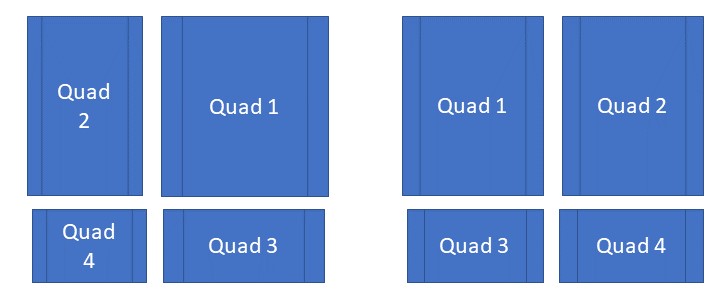
Both participants can only go “so far” in their disclosure, until such time as they begin to provide each other with feedback (Quad Two to Quad One). Only then will the meeting point of the four panes move:
Relationship A [After]
PERSON #1 PERSON #2
This meeting point becomes, in chaos theory terms (see Chapter Two), the “strange attractor.” It is the central point (or theme) in the relationship around which all other aspects of the relationship revolve. Until there is a shift in that central, stabilizing point, all other changes in the size of a window pane are partial (and probably temporary). System theorists often speak, in similar terms, of the powerful role played by the dynamic they label “homeo-rhesis.” While there is a pull in any system toward “homeo-stasis” (return to the same state or level of functioning), there is an even stronger pull toward “homeo-rhesis” (return to the same pathway or mode of functioning).
Thus, a pendulum will exhibit homeo-stasis when it tends to swing the same amount “to” as it does “fro” and when it eventually returns to a state of “zero to” and “zero fro.” However, the pendulum is even more inclined to always move back and forth along the same pathway when swinging “to” and “fro.” This is homeo-rhesis. The analysis conducted by Paul Watzlawick and his colleagues of the relationship between George and Martha (Who’s Afraid of Virginia Woolf?), is based on this principle of homeo-rhesis. As I noted in the earlier quotation from Watzlawick, “the variables that here define stability [in the relationship between George and Martha] are those of relationship, not content, and in terms of their relationship pattern the couple demonstrate an extreme narrow range of behavior.”









